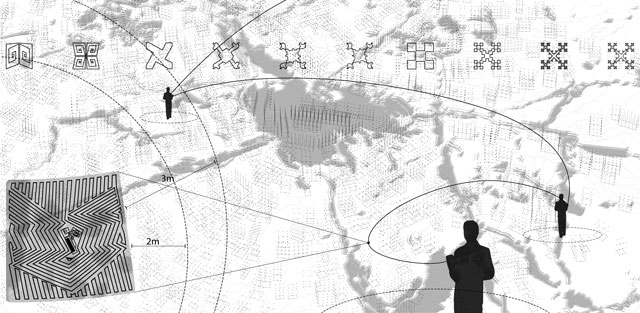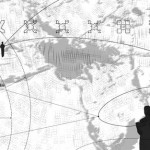Philip Vernon
ARCH-4980.3 | Carla Leitao, Adjunct Professor
IRRADIANT CITY
The Politics of the Envelope
PHILIP VERNON
Information and material are always simultaneous. Thus, as a material and spatial practice, architecture can rigorously examine information technologies. Far from one killing the other, the substantial overlap between architecture and telecommunications provides a serious territory of speculation with real consequences. Consequences which would not be arrived at by any other discipline.
The design consists of a series of broadcasting components capable of storing information. These are connected through users cell-phones to deploy a low-rez internet in Cameroon. As a slowly accreting means of storing information and financial energy these components enable the formation of new social and economic networks. Simultaneously, as self-consciously desirable objects of technology they accumulate, at moments, into evocative spaces of desire before being cannibalized by the existing context.
Each component exists as both desiring object and a broadcast field of information, calling into question conventional notions of enclosure. Envelopes fluctuate between physical and informational enclosure, light and shadow, spanning all frequencies of the spectrum to produce sensory effects and topologies of access which are inseparable.
Understanding the expenditure of technological energy as means of acquiring rank, these components and spaces re-frame existing situations as both legitimate and potentially desirable. By revealing existing potentials as ones of excitement it may be possible to evade a default modernization, ‘leapfrogging’ into futures which would be unthinkable anywhere else.
If the proposal remains schematic it is because it is the sketch of a world. A cosmos with the fractal dimension to sustain explorations of ever-increasing exactitude. It presents its own optics, tactics of authorship, material details, figures and drawings while realigning a constellation of precedents into novel configurations beyond conventional disciplinary envelopes.
Using the Rio de Janerio Olympics as an opportunity serves as the beginning of a paradigm shift within the realm of stadia of not only being a sports venue but also including the needs and concerns of the local communities. This thesis is to rethink the stadium to be built and assembled as parts with the intention of being separate and mobile as it travels to different parts of the city to stimulate socio-economic growth.

